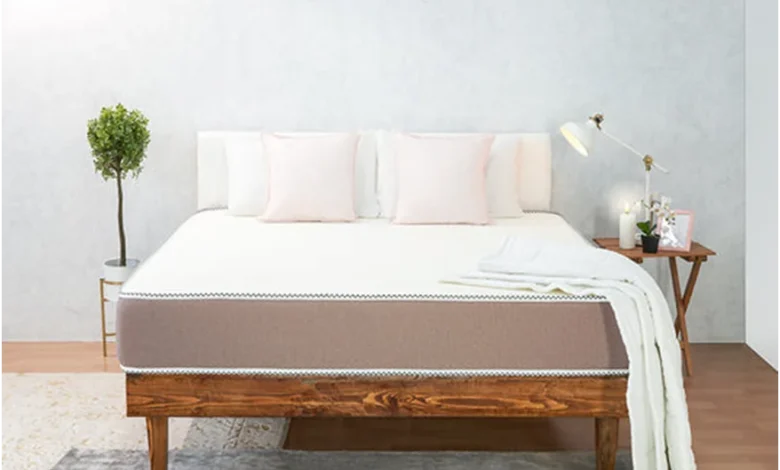The Rise of Foam Mattresses: Inducing a Comfort Revolution

Recent years have seen a revolution in foam mattresses, changing how we sleep and upending conventional mattress designs. This article explores the development of foam mattresses and their advantages, developments, and effects on the sleep market.
· Evolution of Foam Mattresses:
Over several decades, there have been notable developments in the materials, building techniques, and manufacturing procedures used to create foam mattresses. Foam mattresses have come a long way, from being a niche product to becoming famous for sleepers everywhere. This indicates a constant pursuit of innovation and advancement. The origins of foam mattresses may be found in NASA engineers’ work developing cushioning materials for spaceships in the 1960s. Around this period, viscoelastic foam—later dubbed memory foam—was developed to relieve astronauts’ pressure and impact absorption while they were in space. Initially, memory foam mattresses were used in hospital environments, especially for patients who could otherwise acquire bedsores or pressure ulcers.
Because of memory foam’s conforming qualities, pressure was distributed more evenly, which reduced the likelihood of skin breakdown and enhanced patient comfort during prolonged bed rest. In the 1990s, memory foam mattresses entered the consumer market, initially targeting individuals with specific medical needs or sleep-related issues. While early memory foam mattresses received mixed reviews due to concerns about heat retention and off-gassing odors, they laid the groundwork for further innovations in foam mattress technology. One of the primary drawbacks of early memory foam mattresses was their tendency to trap body heat, causing sleepers to feel uncomfortably warm. In response, foam mattress manufacturers developed cooling technologies, such as gel-infused foams, breathable materials, and open-cell structures, to enhance airflow and dissipate heat, ensuring a cooler and more comfortable sleep surface with this Mlily guide.
· Benefits of Foam Mattresses:

Foam mattresses provide numerous advantages that meet sleepers’ various demands and preferences. Memory foam, a type of foam mattress, conforms to the body’s shape to relieve pressure spots and provide targeted support. This can result in better circulation and less discomfort, particularly for those with joint pain or sensitive regions. Because foam mattresses are available in various hardness levels, consumers may select the one that most closely matches their tastes and sleeping style. For comfortable, customized comfort that encourages sound sleep, foam mattresses come in three different feel options: soft, medium, and firm.
Because foam mattresses are recognized for their capacity to absorb and reduce motion transfer, they are the best option for couples or people who share a bed. This function lessens the disruption caused by a sleeping person’s movements. Proper spinal alignment is essential for reducing back pain and promoting overall spinal health. Foam mattresses contour to the body’s curves, providing support where needed and helping maintain a neutral spine alignment, which can alleviate back discomfort and improve sleep quality. Foam mattresses are naturally hypoallergenic and resistant to dust mites, mold, and other allergens that can accumulate in traditional mattresses. This makes foam mattresses suitable for individuals with allergies or respiratory sensitivities, providing a cleaner and healthier sleep environment.
· Innovations in Foam Mattress Design:

The sleep market has changed due to innovations in foam mattress design, which now provide customers with many alternatives to cater to their unique requirements and tastes. Several noteworthy advancements in foam mattress design include customizable features and sophisticated cooling technology.
Cooling Technologies:Cooling technology to solve the heat retention problem frequently connected to conventional memory foam mattresses is one of the most significant advancements in foam mattress design. Manufacturers have created various cooling materials and methods to control temperature and encourage airflow, including gel-infused foams, phase-change materials, and breathable fabric coverings, guaranteeing a colder and more pleasant sleeping surface.
Hybrid Construction: Hybrid mattresses provide the best of both worlds by combining foam layers with other materials like latex or innerspring coils. This creative design combines the contouring softness of foam with the support and responsiveness of coils or latex, creating a flexible and well-balanced sleep experience that accommodates a variety of sleep preferences.
Zoned Support Systems: Zoned support systems, which target particular body parts with variable degrees of firmness or pressure alleviation, are employed by some foam mattress types. These mattresses offer personalized support and alignment by carefully varying the density or hardness of foam layers in various zones. This helps to relieve pressure spots and encourage healthy spinal alignment for improved comfort and quality of sleep.
Adjustable Firmness Levels: Some foam mattresses include firmness levels that can be adjusted, giving users the flexibility to personalize the feel of the mattress to their liking. This may entail changing out the foam layers, adjusting the air chambers, or utilizing remote controls to regulate the hardness level to provide consumers with individualized comfort and flexibility over time.
Ergonomic Contouring and Body Mapping: Modern foam mattress designs use body mapping and ergonomic contouring to produce beds that follow the body’s natural contours and offer precise support where it’s required. These mattresses assist in minimizing pain and pressure spots and encourage ideal spinal alignment for a more peaceful and refreshing sleep experience by conforming to the sleeper’s individual shape and sleep position.
Edge Support Enhancements: Innovative edge support systems have been created by foam mattress producers to increase the longevity and stability of their products, particularly around the perimeter where sinking or sagging may eventually happen. Sleepers may use the whole mattress surface without rolling off or feeling unstable, thanks to edge-to-edge support provided by reinforced edges, high-density foam encasements, or specifically engineered support layers.
· Impact on the Sleep Industry:

The development and introduction of foam mattresses have profoundly affected the mattress market, changing consumer behavior regarding overall quality, comfort, and shopping for mattresses. The following are a few significant effects of foam mattresses on the sleep industry:
Market Disruption and Competition: The conventional mattress market, controlled by brick-and-mortar retailers, has been challenged by the rise of foam mattresses, especially those marketed through direct-to-consumer (DTC) models. Online-only foam mattress businesses have adopted traditional mattress shops by offering easy online shopping, aggressive pricing, and cutting-edge product designs.
Consumer Choice and Customization: Foam mattresses provide customers with a multitude of alternatives in features, firmness levels, and materials, enabling them to choose a mattress that best suits their individual needs and sleep preferences. Consumer expectations have changed due to the more customisation and variety available, which has pushed product producers to innovate and set themselves apart to meet the varied needs of their clientele.
Focus on Comfort and Performance: Modern materials, building methods, and sleep technologies have advanced due to foam mattresses’ emphasis on comfort, support, and sleep quality. Manufacturers constantly spend on research and development to increase sleep quality, reduce pressure spots, and make mattresses more comfortable. This leads to the creation cutting-edge features and designs that are advantageous to customers.
Shift Towards Online Retail: Due to the growing popularity of foam mattresses, the trend towards online mattress sales has quickened, with many customers choosing to buy mattresses straight from manufacturers’ websites or online retailers. This tendency has forced traditional mattress sellers to modify their business strategies, embrace e-commerce, and improve their online presence to stay competitive in the Internet market.
Conclusion
How we sleep has been completely transformed by foam mattresses, which provide unmatched comfort, support, and customization. As long as design and material developments persist, foam mattresses are expected to maintain their position as a significant player in the sleep market and continue to enhance the quality of life for millions of people across the globe.







